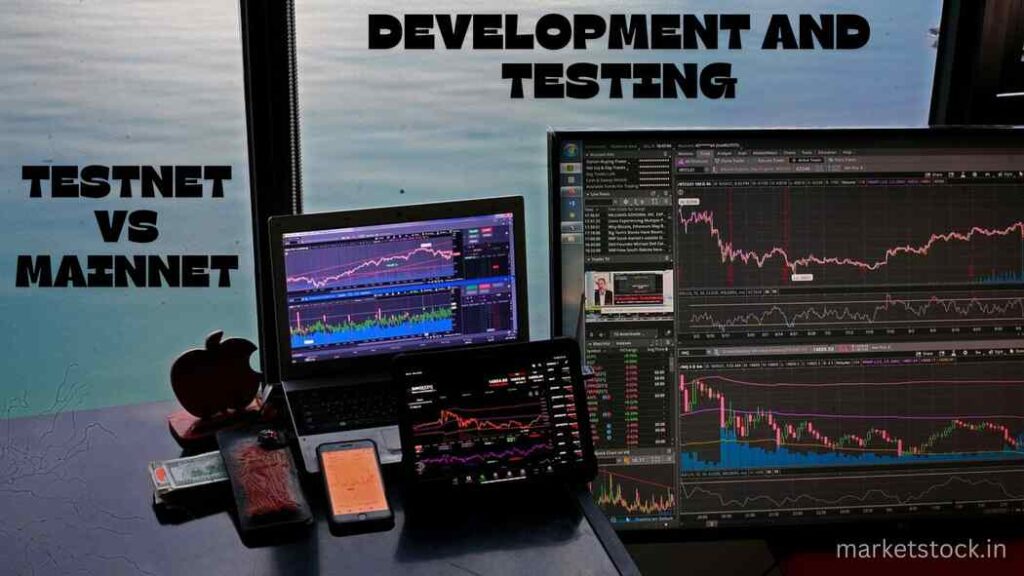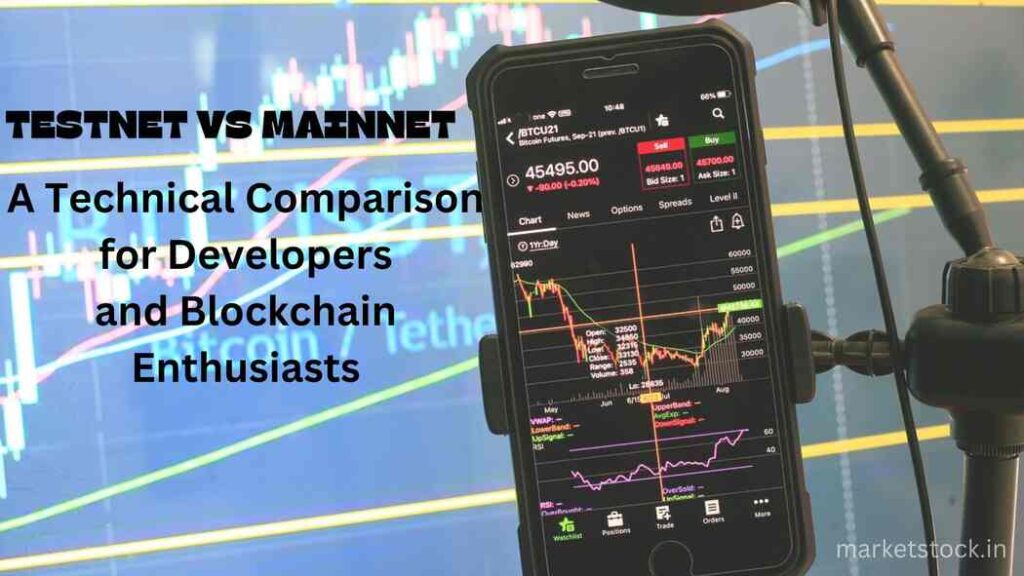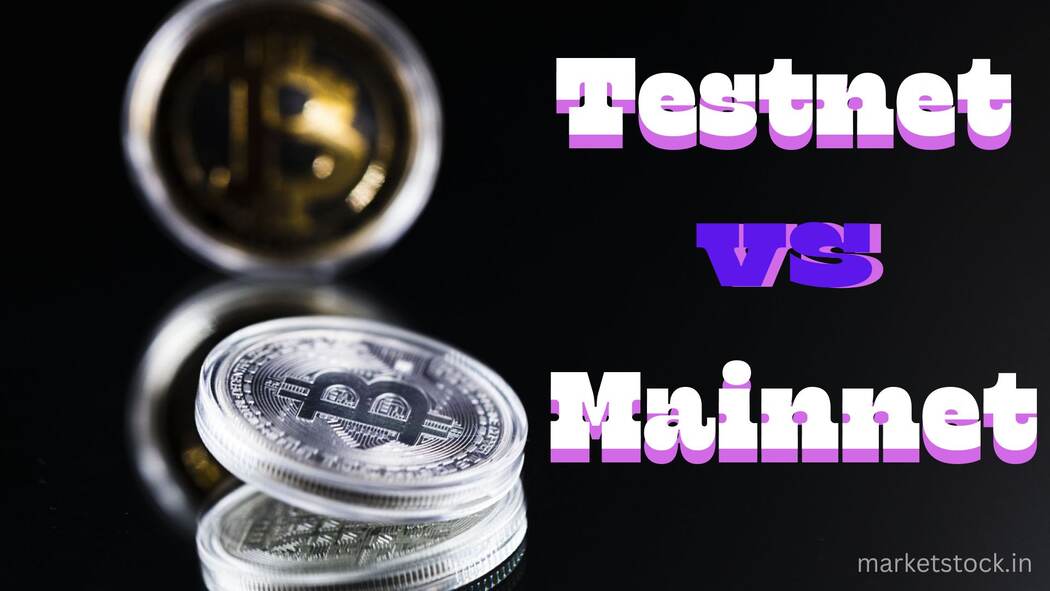Testnet vs Mainnet: A Technical Comparison for Developers and Blockchain Enthusiasts Blockchain technology underpins cryptocurrencies and a growing range of decentralized applications (dApps). But before any project goes live, it needs thorough testing. This is where testnets and mainnets come into play. They represent two distinct environments crucial for the development and deployment of blockchain projects.
The Main Stage: Mainnet
Imagine the mainnet as the final, live version of a blockchain network. It’s where real transactions occur, with real cryptocurrency or digital assets being transferred. Here’s a breakdown of key characteristics of a mainnet:
- Live Network: The mainnet is the operational heart of a blockchain project. It’s constantly running, processing transactions, and securing the network.
- Real Value: Transactions on the mainnet involve real cryptocurrency or digital assets with tangible value. Sending Bitcoin on the Bitcoin mainnet or using an NFT on the Ethereum mainnet are examples.
- Security and immutability: Transactions on the mainnet are permanent and tamper-proof. Once a transaction is validated and added to the blockchain, it cannot be reversed.
- Decentralization: The mainnet is typically decentralized, meaning it’s not controlled by any single entity. Miners or validators on the network work together to secure the network and process transactions.

The Testing Ground: Testnet
Think of a testnet as a safe, simulated environment that mimics the mainnet. It allows developers to test and refine their blockchain projects before deploying them on the live network. Here’s what defines a testnet:
- Sandbox Environment: The testnet provides a platform for developers to experiment with code, smart contracts, and dApps without affecting the mainnet. It’s a space to identify and fix bugs, optimize performance, and stress-test the network’s capacity.
- Test Tokens: Transactions on a testnet typically use test tokens or coins with no real-world value. These tokens are freely available or distributed to testers for interacting with the network.
- Lower Security: Testnets may have lower security measures compared to mainnets. This is because the cost of a security breach on a testnet is significantly lower than on a mainnet with real assets at stake.
- Accessibility: Testnets are often open to the public, allowing developers, testers, and even enthusiasts to participate. This broader participation helps uncover potential issues and gather valuable feedback.

Key Differences Between Testnet and Mainnet
Here’s a table summarizing the core differences between testnets and mainnets:
| Feature | Testnet | Mainnet |
|---|---|---|
| Purpose | Development and testing | Live transactions and network operation |
| Value of Assets | No real value (test tokens) | Real value (cryptocurrency, digital assets) |
| Security | Lower security measures | High security measures |
| Accessibility | Often open to the public | Public access may vary |
ALSO READ THIS – Blockchain Technology: A Revolution in Trust and Transparency
Decentralized Exchanges (DEXs): A Dive into Peer-to-Peer Crypto Trading
Centralized Exchanges (CEXs): Trust and Convenience in Crypto Trading
Benefits of Using Testnets
- Early Bug Detection: Testnets allow developers to identify and fix bugs in their code before deploying them on the mainnet. This helps to prevent potential security vulnerabilities and ensure a smoother user experience.
- Stress Testing: Testnets can be used to simulate real-world scenarios and stress test the network’s capacity to handle high transaction volumes. This helps to identify potential bottlenecks and scalability issues before they impact the live network.
- Gathering Feedback: Open testnets allow developers to gather valuable feedback from a wider community of testers. This feedback can be used to refine user interfaces, improve usability, and identify areas for further development.
Buy crypto from binance – Click Here
When to Use Testnet vs Mainnet
- Use a Testnet: During all stages of development, from initial coding to integration of smart contracts and dApps. Use it for stress testing, security audits, and gathering community feedback.
- Use a Mainnet: Only after thorough testing and audits on the testnet. Deploy your project on the mainnet when you’re confident about its functionality, security, and scalability for real-world use.
In Conclusion
When will a project move from testnet to mainnet?
The timeframe for transitioning from testnet to mainnet can vary depending on the project. Factors like the complexity of the project, the results of testing, and community feedback all influence this decision. Following the project’s official channels and announcements is the best way to stay updated on their mainnet launch plans.
Is it safe to invest in a project that’s only on a testnet?
Being on a testnet is an early stage for a project. It’s important to exercise caution before investing in any project, regardless of whether it’s on a testnet or mainnet. Research the team behind the project, understand its goals and functionalities, and assess the potential risks before making any investment decisions.
How do I find a testnet for a specific blockchain project?
The project’s website or documentation will usually have information about their testnet, including instructions on how to participate and acquire test tokens. You can also search online forums and communities related to the project for more information.
What’s the difference between testnet vs mainnet?
Testnet: A simulated environment for developers to test and refine blockchain projects before launch. (Think: coding playground)
Mainnet: The live network where real transactions with real cryptocurrency or digital assets occur. (Think: the main stage)
Testnets and mainnets play critical roles in the development and deployment of successful blockchain projects. Testnets provide a safe and controlled environment for experimentation and refinement, while mainnets serve as the platform for real-world transactions and network operation. Understanding these distinct environments is essential for anyone involved in developing or interacting with blockchain technology.
